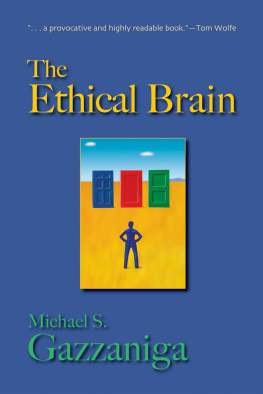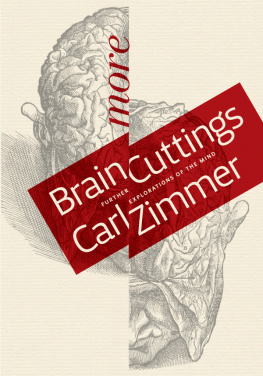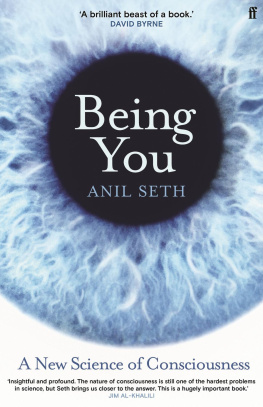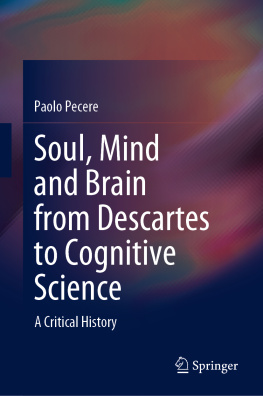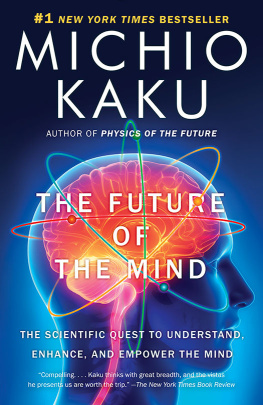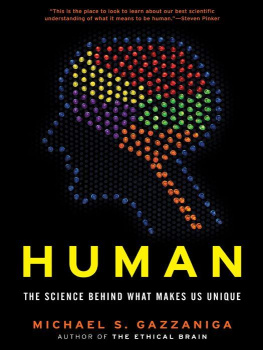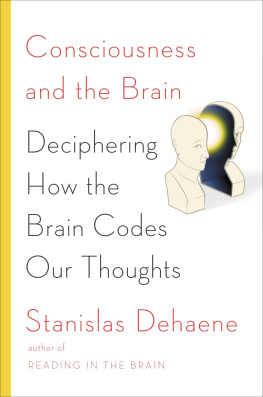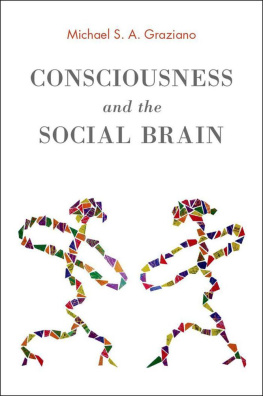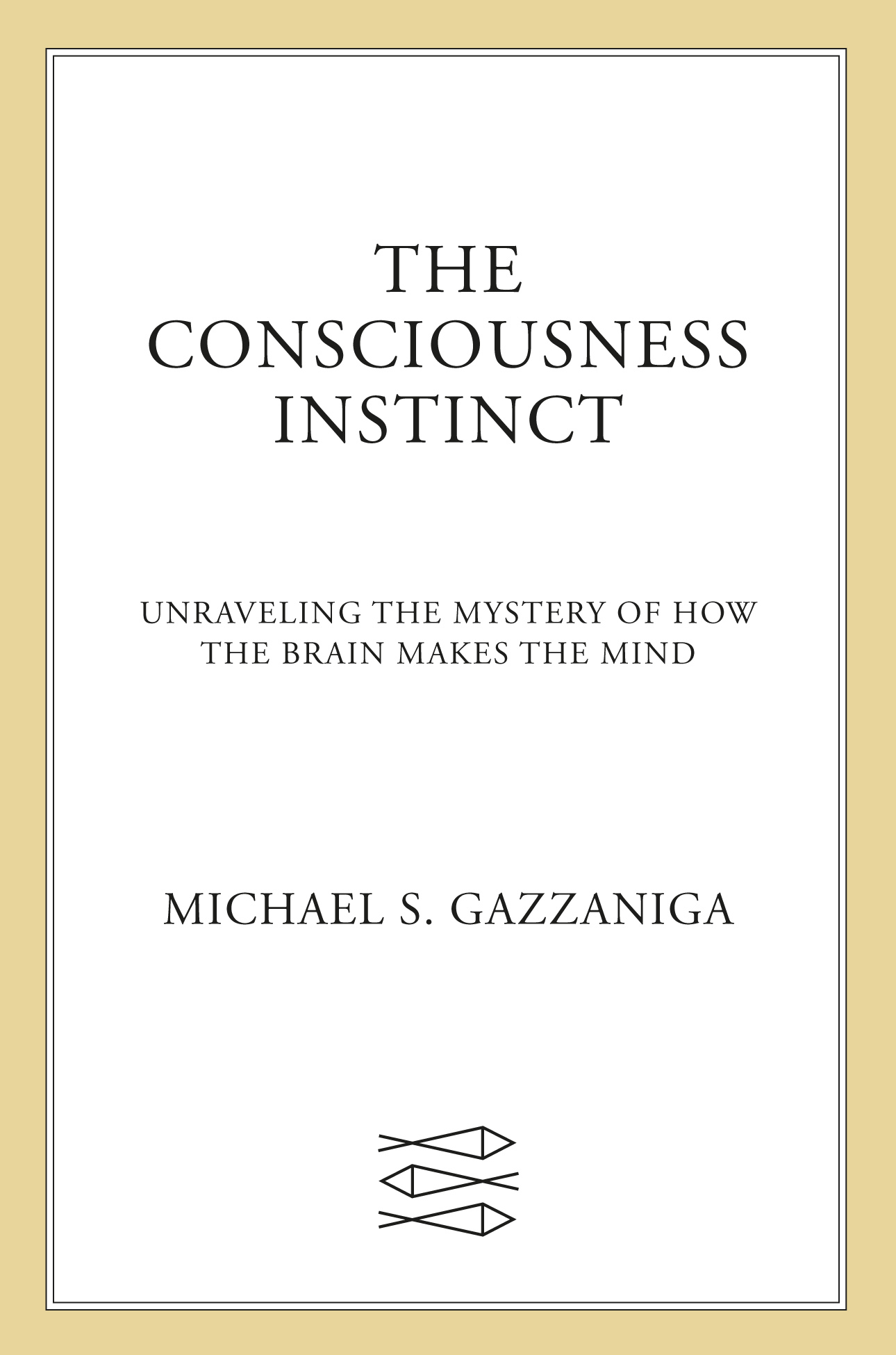Contents
Guide
Pagebreaks of the print version

The author and publisher have provided this e-book to you for your personal use only. You may not make this e-book publicly available in any way. Copyright infringement is against the law. If you believe the copy of this e-book you are reading infringes on the authors copyright, please notify the publisher at: us.macmillanusa.com/piracy.
For Leonardo,
consciousness unfolding if I ever saw it
I MAGINE, IF YOU CAN, being conscious of only one momentright now. This moment exists without a past or a future. Now imagine life being a series of these moments, each existing in some kind of isolation from all other moments, not connected by subjective time. Imagine being temporarily frozen in each of the moments that together make up normal living. It is hard to imagine this scenario because our minds travel back and forth through time so fluidly, like a ballerina in The Nutcracker . One moment serves as the grist for the next planned action, which is in turn weighed in the present against our past experience. It is hard to imagine this ever not being true. And yet, conk your head in the right way and that might be you, still able to understand the idea of having a past and future, but unable to place yourself in your own past or future. Weird, if true. No past, no future, only the present.
In this book I will take you on a journey through a world where hard-to-imagine alterations in what we call conscious experience are commonplace. The neurologic ward of every hospital is replete with disruptions of normal conscious experience. Each of these cases tells us something about how our brains are organized to deliver up our cherished consciousness, moment by moment. Each example of disruption cries out to be understood, to be used to deduce a coherent story about how our brains build and produce the everyday joys of being conscious. In the past, folks were content to tell stories of these bizarre phenomena. Here in the twenty-first century, it is not enough to simply describe the basketful of intriguing disorders. In this book, my goal is to move forward on the problem of consciousness, and I will try to illuminate how our exquisitely evolved brain is organized to do its magic. In short, I want to examine how matter makes minds.
A few years back, a work trip found me passing through customs at Heathrow in London. The passport control officer, an attentive British civil servant, dutifully asked me my name and business and reason for coming to the United Kingdom. I told him I did brain research and was on my way to Oxford for a meeting. He asked if I was aware of the two different functions of the cerebral hemispheres, the left and the right. I somewhat proudly said that not only had I heard about it, I was in part responsible for the work. As he perused my passport, he asked what the meeting in Oxford was going to be about. I responded, with an air of authority, About consciousness.
The agent closed the passport and, handing it back, asked, Have you ever thought about quitting while you are ahead?
Apparently not. Some of us are naturally incautious in our desire to wonder about our nature. Working away in the mind/brain sciences as I have for sixty years makes me painfully aware that we humans have not yet grasped the problem in its fullness. Still, it is in our nature to think about who and what we are and what it means to be conscious. Once bitten by the question, we spend our lives gnawed by the desire for an answer. Yet, when we try to grab hold of the problem of consciousness, it seems to dissolve like fog. Why has the quest to understand consciousness been so difficult? Do the lingering ideas of the past block us from seeing clearly how it comes about? Is consciousness just what brains do? Just as a pocket watch with all of its gears tells us the time, do brains with all their neurons just give us consciousness? The history of the topic is vast, swept by pendulum swings between the pure mechanists and the hopeful mentalists. Surprisingly, twenty-five hundred years of human history have not resolved the question or taught our species how to frame an understanding of our personal conscious experience. Indeed, our core ideas have not changed that much. While thinking explicitly about consciousness was ignited by Descartes three hundred years ago, two overarching and contradictory notionsthat the mind either is part of the brains workings or works somehow independently of the brainhave been around seemingly forever. Indeed, these ideas are still with us.
In recent years the topic of consciousness has become red-hot once again. At the same time, and despite the modern avalanche of new data, there are few, if any, generally accepted proposals on how the brain builds a mind and, with it, conscious experience. The goal of this book is both to break free from this quagmire and to present a new view of how to conceptualize consciousness. Our journey includes knowledge gained not only from neurology but also from evolutionary and theoretical biology, engineering and physics, and, of course, psychology and philosophy. Nobody said the search was going to be easy. But the goalunderstanding how nature pulls off the trick of turning neurons into mindsis attainable. So hold on to your hat!
Plainly stated, I believe consciousness is an instinct. Many organisms, not just humans, come with it, ready-made. That is what instincts are, something organisms come with. Living things have an organization that allows life and ultimately consciousness to exist, even though they are made from the same materials as the non-living natural world that surrounds them. And instincts envelop organisms from bacteria to humans. Survival, sex, resilience, and walking are commonly thought to be instincts, but so, too, are more complex capacities such as language and socialityall are instincts. The list is long, and we humans seem to have more instincts than other creatures. Yet there is something special about the consciousness instinct. It is no ordinary instinct. In fact, it seems so extraordinary that many think only we humans can lay claim to it. Even if thats not the case, we want to know more about it. And because we all have it, we all think we have insight into it. As we will see, it is a slippery, complex instinct situated in the universes most impenetrable organ, the brain.
The word apple is a noun; it signifies a real, physical object. The word democracy is a noun as well, and it describes something a little harder to pin down, a state of societal relationships. It is easy for me to show you an apple, its physical reality. It is hard for me to show you the physical reality of a democracy. How about instinct, another noun? All three are definable somethings , whether they are objects or concepts, managed by the brain. We have lots of these somethings, but where are they in the brain? Are some best represented as actual structures in the brain and others best represented by the processing actions of structures? Indeed, what is the physical reality of an instinct? Is it tangible, like an apple, or elusive, like a democracy?
Complex instincts are more like democracies; they are identifiable but not easily localized. They emerge from the interaction of simple instincts but are not those things themselvesjust as an intricate pocket watch chugs away at keeping time, yet time itself is impossible to find in the watch. In order to understand how the watch relates to time, you have to describe its principles of design, its architecture, not just list all its springs and gears. The same is true of the consciousness instinct. Dont think that if consciousness is an instinct, there will be a single, unitary, discrete brain network generating that phenomenal self-aware state we all relish. It is not like that at all. When we visit the neurologic wards, armed with our ideas, youll recognize right away that patients who suffer from dementia, even severe dementias, are conscious. These patients with widely distributed brain lesions, a level of disruption vast enough to bring any computing machine to its knees, remain conscious. In one hospital room after another, each harboring a patient with a focal or a diffuse brain impairment, consciousness purrs along. After a tour of the wards, it begins to look like consciousness is not a system property at all. It is a property of local brain circuits.


